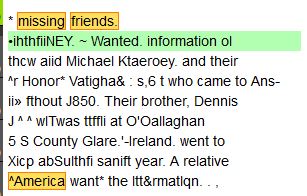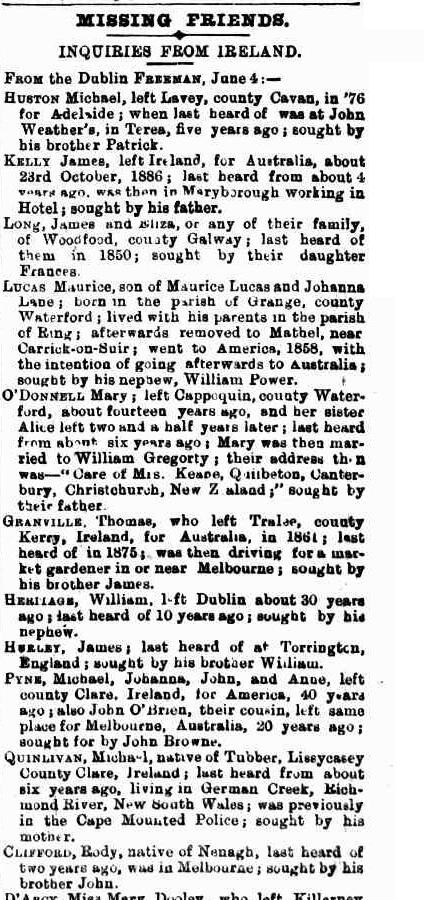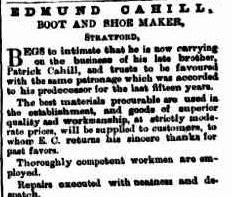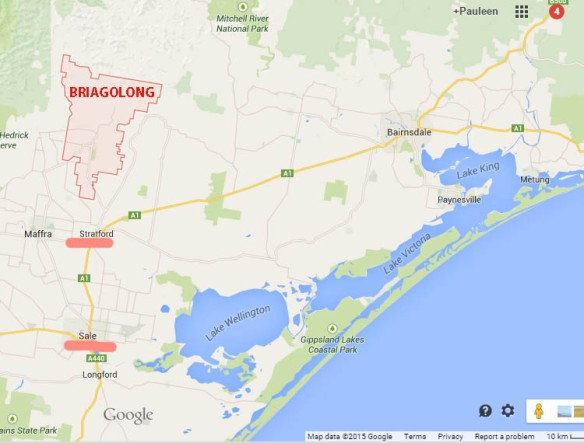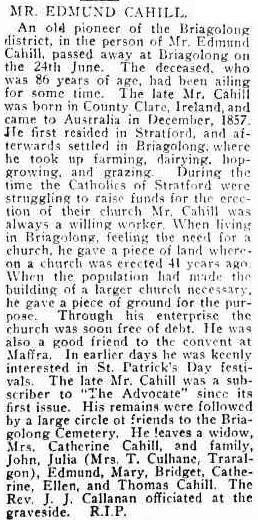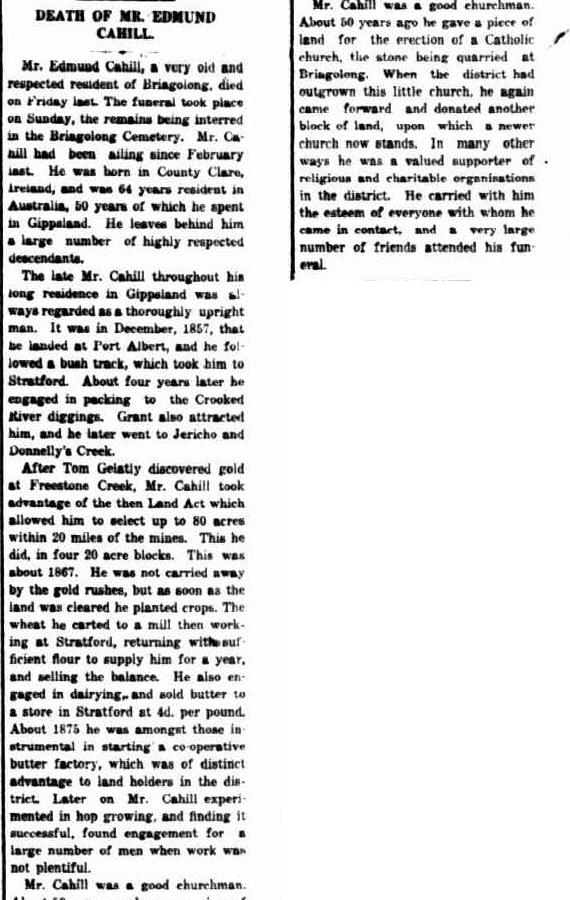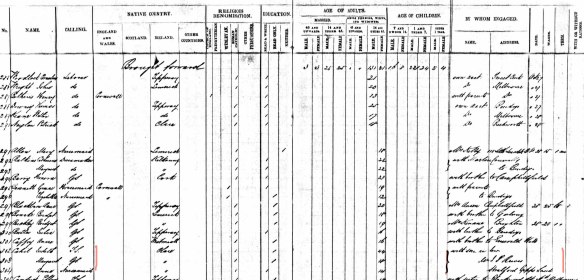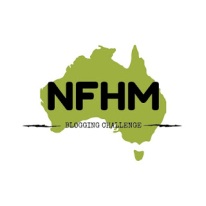 Today’s post is a recyled version of one I wrote four years ago on my Family History Across the Seas blog.I’m also participating in the National Family History Month challenge initiated by my genimate Alex from Family Tree Frog blog.
Today’s post is a recyled version of one I wrote four years ago on my Family History Across the Seas blog.I’m also participating in the National Family History Month challenge initiated by my genimate Alex from Family Tree Frog blog.
I’m in Irish mode at the moment, and as most of us know “none” of the census records survived from the 19th century. No, they weren’t all burnt in the Troubles, some were actually destroyed as part of a bureaucratic process.
So Irish family researchers need to be a little more innovative and try other strategies. You may be lucky and find your ancestors in some of the very few surviving census records or those where someone applied for a pension and needed to verify their birth using a 19th century census extract. Unfortunately I don’t have the luck of the proverbial Irish and my 2x great-mother’s sister, Honora Garvey nee O’Brien, is not among these, even though she was quite poor.What a blessing that would have been!
The next step is to turn to the Griffith’s Valuations which are now available online through Ask About Ireland. It’s quite wondrous now that we can get instant answers and have a digital map to go with it. Sure beats having to look at the GV on microfiche and visiting Ireland for the map.
I could make my life easier, and this post very brief, by exhorting you to beg, borrow or buy a copy of James Reilly’s book Richard Griffith and his Valuations of Ireland. If you have Irish ancestry, do yourself a favour and check its availability at your favourite bookstore or library. Hint: an preview of this book is now available to read through Google Books – enough for you to see how much value this seemingly slight book contains. In the meantime have a read of this short article by Reilly called Is there more in Griffith’s Valuations than just names?
Reilly’s book will astonish you with just how much lies behind those tables of information that we Irish researchers treat as a substitute for the census. I think the temptation for us is to simply look at the superficial facts of the size of our ancestor’s land, its value and who the immediate lessor was. Reilly makes it clear just how much more there is to even the summary information and in particular the significance of the number and alpha reference at the start of the line.

The new online access makes it easy to link the search with the map reference indicated by that originating number, but again, do we go beyond that? How about the field books, perambulation books and house books that lie behind the valuation? Yes, they don’t exist for all parishes but wouldn’t you want to check? Unfortunately they’re mostly only available in Ireland but if you’re sufficiently keen you may choose to employ a researcher to follow it up, especially if you can determine they exist.
Have you noticed on the GV maps at Ask About Ireland, there’s an option to include the house books? If you activate that option you’ll be able to see where they exist for which townland. Murphy at work again, “my” townlands don’t have surviving house books.
However, as a teaser: If your ancestors were either Michael Meaney or James Carmody of Mountrice townland in Kilseily parish, Clare, you would no doubt be interested to know that the landlord intended “to build houses for them and then throw down the houses on which they presently live”. Notes from the Perambulation book for the Parishes of Kilseily and Killuran by surveyor Michael O’Malley (The National Archives of Ireland). Or you may wish to know who ran huxteries in the area or…
The complication throughout is to know which one is really is your man (or woman)! From my point of view you need some other way, eg parish registers, to be assured of which one you need to be following. And of course with the great advance of digitisation, the Catholic parish registers are available through the National Library of Ireland or Ancestry or Findmypast.
The Irish Valuation Office now has current valuation information available to search online (try typing in your county and townland). In many ways this isn’t of great use but it satisfies a little curiosity. You can click on any of the blocks and you will be given the owner’s name and other details – perhaps a way to find a relative or at least someone to ask. I was surprised just how familiar were the names of people still holding land in Ballykelly – echoes of the 1911 census and also Griffith’s. Also surprised to find one Not really of great specific use but interesting none the less!
REVISION LISTS
These are one of the unsung heroes of Irish research. Have you found your ancestors in the Griffith’s tables? If so, they will enable you to trace who took over the family’s property generation after generation. Not only that, you’ll have a good chance that they’ll tip you off on when various family members died.(John Grenham wrote about this recently)
How does that work? Well, the original valuations were reassessed on a regular basis for change of tenancy or ownership, improvements or deterioration of the property. On the original books held by the Valuation Office, these amendments are messy but able to be followed because they are in different coloured inks and different hands. Your 2 x great grandfather’s death might result in a new entry with his wife’s name, then subsequently various children until it perhaps passes to a distant relative or out of the family.

The good news is that these are available wherever you live because you can order them through the Family Search catalogue and have them delivered to your local family history centre or approved library. The easiest ways to find the correct film is to search the catalogue by keyword (not anything else). For example if I enter “valuation revision Ballykelly Clare” I promptly obtain film number 819471. I strongly encourage you to order in the relevant film for your parish. While it’s in black and white, not colour as it is at the Valuation Office, it generally runs across the page on the same “line”. Not perfect but better than nothing if you’re not heading to Dublin.

This is the result of my search on Family Search for Ballykelly, using the keyword option.
The other benefit is that it lets you search beyond the timeframe of the initial valuations to perhaps find your ancestor.
For example, I wanted to see where my James Sherry and his family were living in the townland of Knockina outside Gorey, Wexford in the 1870s before they emigrated (I had Knockina from the Gorey parish registers). The valuation revisions suggested to me that they must have been living in a property owned by the Southern and Eastern Railway as that was the only property not attached to a specific family and I knew he was a railway worker. If my deduction is correct, it suggests he may have held a position of some responsibility, although it’s likely he was still a grassroots worker.
When the temporary parish priest took us (in 1995) to meet someone who he said would know about my O’Briens from Ballykelly, I was rather mystified as the surname was different (though essentially the same as my 2xgreat grandmother’s brother’s wife’s). It was through Paddy that I saw my ancestor’s plot of land and the remains of their house.

The remains of the O’Brien house on the Ballykelly townland. P Cass 2003
Afterwards, in Dublin, we visited the Valuation Office and saw the folders piled high on the shelves. We wondered why and how the land had been transferred. By following the GV revisions, I had a lightbulb moment as Paddy had inherited the land after the death of all my great/grand aunts who were single.
While I’ve also been able to read the Ballykelly field books at the National Archives of Ireland, I confess they were bewildering to this urbanite. Still it’s all grist to the genealogical mill.
I really can’t emphasise enough the value of following your family from the original valuations through the revision lists to see what happened to them and their property.
[And here’s a new occupation for you: the meresman was the hired local resident who assisted in identifying boundaries (Reilly, op cit page 4)]
Irish research may be challenging but it isn’t impossible. You do, however, need to mine every possible source in the country to which they emigrated, in order to pin down their home parish eg Australian parish registers, certificates, obituaries (a clue not fact), gravestones, oral histories, siblings’ certificates etc. You really DO need their parish of origin, the townland or the estate from which they came. While Agent’s Immigrant Lists (online) are helpful, what you really need to look at are the Bounty Immigrant Lists (on microfilm from State Records NSW) which include parents’ names and place of origin (what you want is the 2nd reel number in the list, where it’s available eg Reel2481 not 2139). Also check the Immigration Deposit Journals on microfilm or through Ancestry.
Good luck and happy “hunting”.
| Surname |
Firstname |
Age |
Ship |
Year |
Arriving |
Remarks |
Copy |
|
| ADGY |
Letitia |
24 |
John Temperley |
1863 |
Sydney |
|
Reel 2139, [4/4797]; Reel 2481, [4/4983] |
|
| ADGY |
Samuel |
26 |
John Temperley |
1863 |
Sydney |
|
Reel 2139, [4/4797]; Reel 2481, [4/4983] |
|
| BEACOM |
Henry |
18 |
John Temperley |
1863 |
Sydney |
and brother |
Reel 2139, [4/4797]; Reel 2481, [4/4983] |
|
| BEACOM |
Joseph |
18 |
John Temperley |
1863 |
Sydney |
and brother |
Reel 2139, [4/4797]; Reel 2481, [4/4983] |
|
| BEATTIE |
Margaret |
20 |
John Temperley |
1863 |
Sydney |
and sister |
Reel 2139, [4/4797]; Reel 2481, [4/4983] |
|
| BEATTIE |
Sarah |
18 |
John Temperley |
1863 |
Sydney |
and sister |
Reel 2139, [4/4797]; Reel 2481, [4/4983] |
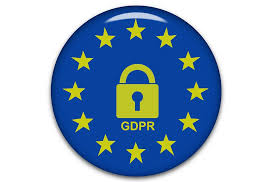 However, the internet’s boundaries are porous and we don’t always know where our blog readership comes from unless we burrow down into our site’s statistics. This means that to be compliant we need to ensure do our best to ensure that our blog meets the relevant privacy regulations and that our readers are aware of how we’re treating their personal data.
However, the internet’s boundaries are porous and we don’t always know where our blog readership comes from unless we burrow down into our site’s statistics. This means that to be compliant we need to ensure do our best to ensure that our blog meets the relevant privacy regulations and that our readers are aware of how we’re treating their personal data.
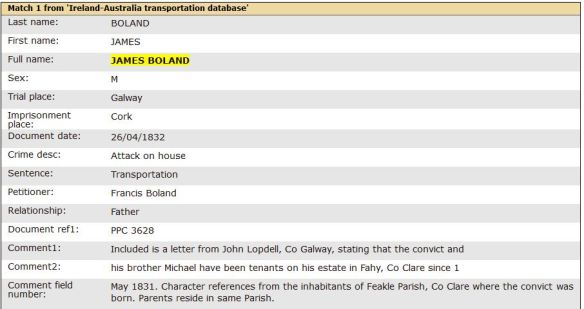
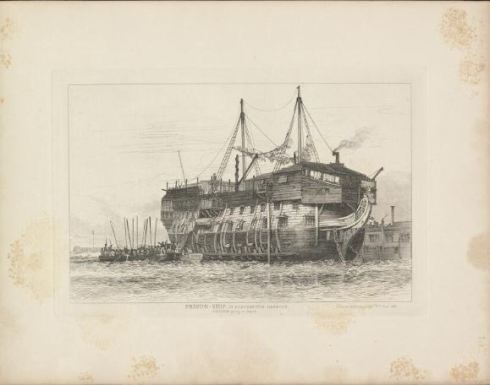
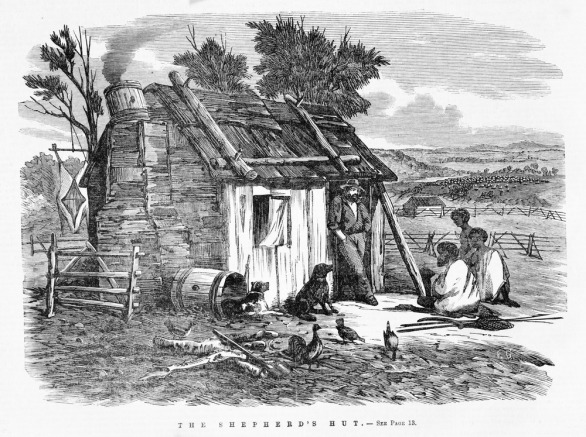

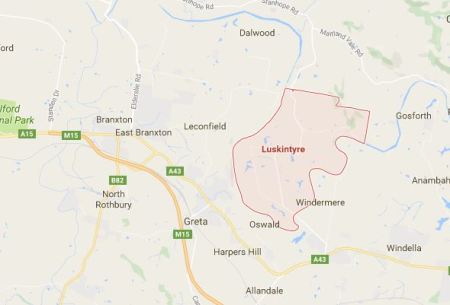
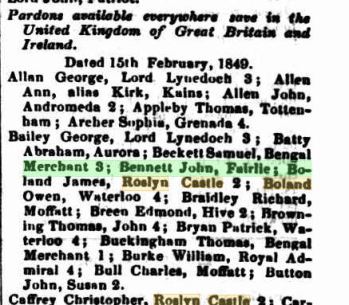 James’s life sentence was essentially commuted by gaining first a Ticket of Leave on 11 May 1842, enabling him to move freely around the Maitland area.
James’s life sentence was essentially commuted by gaining first a Ticket of Leave on 11 May 1842, enabling him to move freely around the Maitland area.
 James left an extensive estate which was auctioned:
James left an extensive estate which was auctioned:
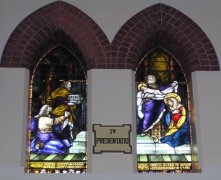

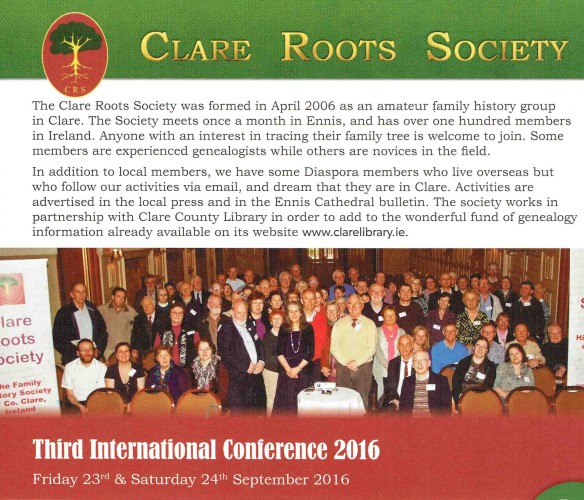
 Today’s post is a recyled version of one I wrote four years ago on my
Today’s post is a recyled version of one I wrote four years ago on my 



